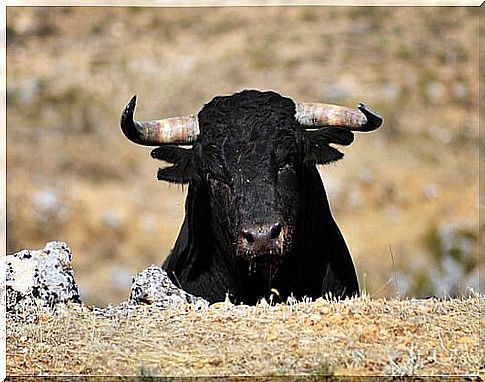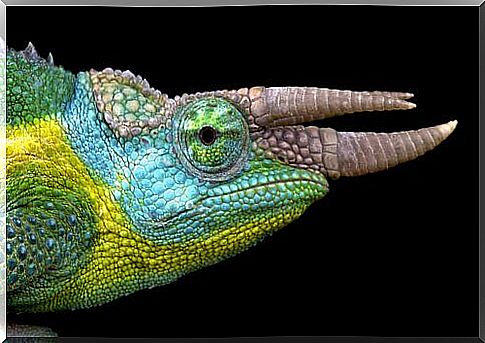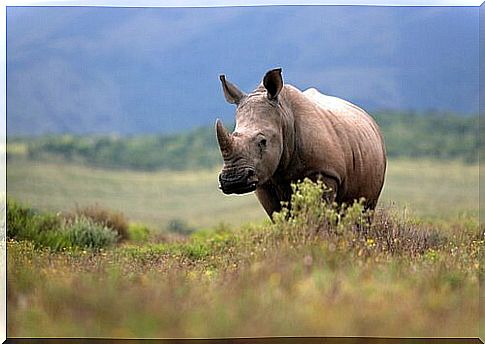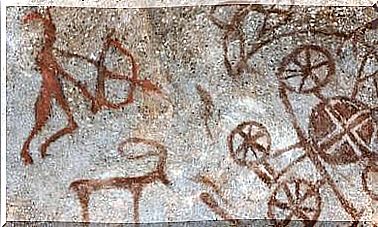5 Horned Animals You Need To Know

Many of the horned animals are ruminants, hoofed mammals such as bulls, deer, antelope or moose. Yet, in the incredible variety with which Nature loves to surprise us, there are also other species with these special appendages.
They can be solid bone or even keratin (as in the case of the rhinoceros). In this article we will tell you about some of the most interesting horned animals , introducing you to their most interesting and curious characteristics.
What are the animals with horns?
Of different sizes and shapes, the horns can be covered with leather, folded in a spiral or finished at the tip, with or without branches. Furthermore, in some countries, they have been attributed healing properties and “magical” powers for centuries. With the result that many wild animals are brutally killed every year to resell their horns on the black market. After this brief introduction, let’s move on to the description of 5 horned animals you need to know. Some you already know, others will surprise you: we are sure.
1. Taurus
The bull’s horns – in the photo that opens this article – develop on the sides of the head and arise directly from the frontal bone of this noble and powerful animal. They have a conical shape and their surface is rough at the base, then becoming smooth gradually towards the tip.
When they are born, the calves do not have them: the horns begin to grow from the third week of life at an average of one centimeter per month. At two years of age they reach considerable size, slightly curved forward and decidedly pointed. They are a deadly weapon against any predator.
2. Giraffe
Among the animals with horns, the sumptuous and elegant giraffe is also worth mentioning. In this species, the bony appendages are known as ossicones. They have the appearance of a protuberance which, in young and female specimens, is covered with hair.

These bumps are made of cartilage and are vascularized. Therefore, they serve to regulate body temperature. The males, as often happens, use them in the fights for the territory and the amorous disputes: their ossicones are more pronounced and longer than those of the females. They end at the tip with a kind of “knob”.
3. Jackson’s chameleon
This reptile has not one, but three horns on its head: one above each eye and the third above the nose. They are present only in the male specimens. Previously it was thought that they served in struggles for the territory or for females. In fact, this species of chameleon uses more peaceful strategies, such as changing colors or adopting “intimidating” positions.

Jackson’s chameleon is oviparous and gestation lasts about six months, it feeds on small insects and lives in humid regions of Africa, mainly in Kenya and Tanzania. It is increasingly popular as a pet due to its absolutely striking shades.
4. Rhino
One of the main characteristics of the rhinoceros are its horns, formed from keratin, which grow spontaneously between the muzzle and the forehead. The two African species (black and white) and the Sumatran rhinoceros have two horns (the anterior one is more developed), while the other Asian species have only one (Indian rhinoceros and Javan rhinoceros).

The horns of rhinos are real lethal weapons that are used in disputes between dominant males. However, the fight takes place with the heads close together and pushing the opponent with the use of these nubs. This is a choice to limit the damage: if they collide at full speed, using their horns, the consequences for both opponents would be lethal.
5. Giant horned lizard
We end our review dedicated to horned animals with one of the most extraordinary animals on the planet. It is a living being endemic from the Mexican desert, whose bumps appear in various parts of the head and are made of keratin. Centuries ago, they were mere thorns that evolved into horns to increase the survival chances of this scaly reptile, also known as “horned frinosoma” or “horny toad” ( Phrynosoma cornutum ).

The giant horned lizard is a cold-blooded animal, it feeds on arthropods and insects and, in order to escape predators, it “sprays” blood from its tears. This substance has a bad smell and taste, thus carrying out an excellent deterrent action.
Another defense technique, perhaps more effective, consists in taking refuge among stones, trunks and shrubs, or hiding in sandy soils. In the wild it has a life expectancy of three years and, as regards reproduction, the eggs are laid between April and July. The incubation period is about 50 days and the young are immediately self-sufficient.









